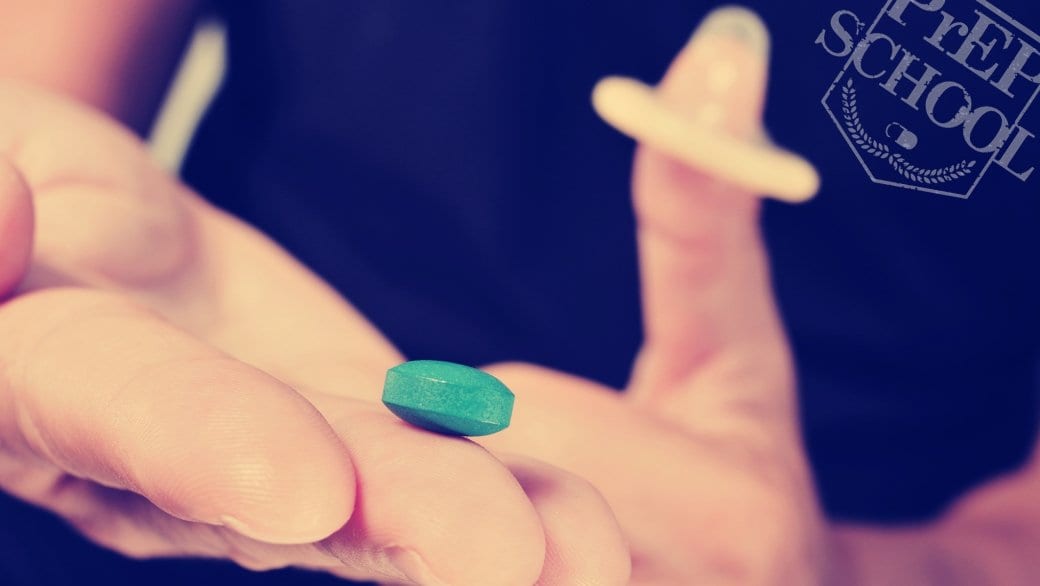According to the US Centers for Disease Control and Prevention (CDC), AIDS Committee of Toronto (ACT) and CATIE, PrEP is recommended for those who are HIV-negative and at very high risk of contracting HIV. What exactly does “very high risk” actually mean? The definition differs slightly from site-to-site, but the basics are the same: if you are either HIV-negative and in an ongoing relationship with someone who is HIV-positive, a gay or bisexual man who has had anal sex without a condom or was diagnosed with an STD in the last six months, or sex workers and intravenous drug users, you may be considered at high risk. So how many of us does this include? And if we don’t fit into these categories, are we just as protected with condoms as we would be with PrEP?
If you’re not on PrEP and consistently using condoms, the protection rate against HIV is reportedly in the high 90 percent range for men who have sex with men (MSM). The risk of contracting HIV via unprotected oral sex is incredibly low: 0 to 1 in 2,500 chances to be exact, or 0 percent to 0.04 percent. On paper, those who are low risk should be satisfied with this status quo. But the problem is that those figures are from ideal laboratory settings. Real-life risk with condoms alone, therefore, is probably a lot higher.
Dawn Smith, from the epidemiology branch of the division of HIV/AIDS prevention at the CDC presented results at the 2013 Conference on Retroviruses and Opportunistic Infections (CROI), about the effectiveness of condoms for MSM. She reported that, in actuality, MSM who always use condoms only have a 70 percent chance of lowering the risk of HIV infection, rather than the 90 percent that is often reported.
This stat should in no way downplay the significance of condoms and their effectiveness, historically or even today. They’re an extremely powerful tool in reducing the risk of many STIs, HIV, as well as the viral hepatitis, Zika virus and Ebola . . . when used correctly, every time.
“I would say that condoms are likely well over 90 percent effective if they’re used properly all of the time,” says Susan Pa Buchbinder, clinical professor in the departments of medicine and epidemiology and biostatistics at the University of San Francisco. “We do know you can improve effectiveness by practice-makes-perfect. People who use them more frequently have more success with them. Not being high or drunk or otherwise altered, and using lube — the right kind of lube — is really important.”
With Pride celebrations around the corner for most North American countries, we can see where questions of correct use could arise, especially when drugs and alcohol come into play. In this case, an ordinarily low-risk individual can be at high risk. Using Smith’s numbers regarding condom effectiveness, PrEP is over 20 percent more effective in protecting MSM against HIV than consistent condom use. This is not to advocate condomless sex — PrEP doesn’t protect against other STIs, which are on the rise — but for those not using condoms consistently anyway, it’s better than nothing.
This leads to the next point: the CDC also found that only one in six gay and bisexual men use condoms every time. This is troubling as well, because analysis shows that using condoms occasionally is virtually no better, in terms of risk of HIV transmission, than not using them at all — inconsistent users are only 4.4 percent less likely to acquire HIV than people who don’t use condoms. This might help us understand why there are 50,000 new cases of HIV per year in the US alone.
So according to the recommendations by the CDC, ACT and CATIE, these five in six men who are essentially at as much risk as those who never use condoms should be on PrEP — and that’s 83.3 percent of gay men. This obviously is not the case in Canada, even though the CDC declares that PrEP would be over 90 percent effective in protecting these men against HIV. Why isn’t PrEP more easily accessible to Canadian men?
We still see a huge resistance against PrEP on a social level. The president of the AIDS Healthcare Foundation, Michael Weinstein, had infamously claimed that PrEP is a “party drug” and has yet to back down. Perhaps it’s sentiments like these that are making them less accessible? So what are people so afraid of?
Part of it might go back to condom use: we all know that PrEP isn’t always being used with condoms, and some are even motivated to start taking PrEP so they don’t have to use condoms anymore. “Condom use is historically a massive success of gay community organizing, collectivism, and advocacy,” explains Dr Darrell Tan, whose research focuses on clinical trials in HIV prevention in Toronto. “So this can be seen as undermining all of those successes.”
It’s an interesting insight and offers an explanation to the resistance of PrEP, but again, when five out of six gay men are not using condoms consistently anyway, it doesn’t seem right to blame PrEP for undermining condom use. For those men, using PrEP would simply protect them in ways that they weren’t being protected before — and we need to start seeing this as a good thing.
Looking at the numbers, it’s troubling to think that the majority of sexually active gay and bisexual men who are HIV-negative do not have access to PrEP in Canada. PrEP has now been approved by Health Canada, so it’s time to be asking: Why isn’t it accessible to everybody?
Next: A safer way to party and play?>
(Editor’s Note, June 7, 2016: A previous version of this article stated that there are 500,000 new cases of HIV per year in the US. There are an estimated 50,000 new cases of HIV per year in the US.)

 Why you can trust Xtra
Why you can trust Xtra


